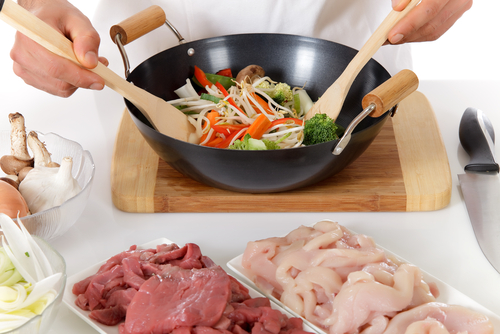Defining our food culture
In embracing commercial global cuisine, we are forgetting our own ethnic food culture
Aug 12, 2018-Nepal’s food is as culturally diverse as it is geographically and ethnically. But many of us are not aware of its richness and are more likely to be informed about the global cuisines than our own. Though food is an epitome of the culture and they have an intrinsic relationship, little attention is paid to understand, explore, and promote Nepali food culture, which defines who we are.
There are over a hundred ethnic communities in Nepal, every one of them with a food culture deeply rooted in the environment they live in. Although rice now seems to be a staple across all regions and ethnicities of Nepal, it wasn’t always the case, especially in the mountains. Even in hilly areas, only the elites who owned flat irrigated lands along the rivers had the luxury of eating rice as a staple food.
For others, locally-grown variety of grains well adapted to the environment and low-fertile hilly terrain used to be the staple grains—Kodo (finger millet), kaguno (foxtail millet), chino (proso millet), makai (maize), jau (barley), uwa (naked barley), phapar (buckwheat).
Now such traditional and nutritious grains are largely neglected and underutilised. Rice continues to be perceived as a rich man’s food and is more preferred, taking over other grains. In recent decades, rice has been flown to rural terrains by the government and donors campaigning against hunger. But little attention has been paid to encourage local varieties of grains that are more nutritious, wholesome, and sustainable.
Similar to other cultures around the world, food is at the centre of any festivals and celebrations in Nepali culture. This is more evident in Newa community than any other. Bhoye, a lavish elaborated Newa feast organised during festivals, jaatras and special occasions, is an integral part of the Newa culture. The rich food culture can be attributed to its fertile valley, vibrant cross-border trading and a historically well-to-do economy. Making a yomari—a steamed rice flour cake filled with chaku—and sapumicha—buffalo tripe filled with bone marrow—are examples of the ingenuity of Newa cuisine. One of the peculiar flavouring and my favorite ingredients is aromatic-nutty roasted mustard oil (buchika). The world is yet to discover its flavour.
While hilly communities save greens for the dry season, members of the Tharu and other communities in the southern plains preserve greens for the monsoon. Taro leaves are mixed with small dried fish to make sidhara and greens are mixed with lentil paste to make biriya. Their food culture is largely characterised by the flooded plains they live in, like ghonghi, a much-loved mud-water snail, fish, prawns, crabs, and mussels Sherpa, Tamang and other communities living in the cold harsh Himalayan region might have simple basic flavors but are highly nutritious to give sustained energy to survive the environment. In the Sherpa community, sun-dried, cooked green maize kernels are made into hearty winter soup with beans known as phalgi. Tsampa, flour made from roasted barley or naked barely, is one of the staples of mountainous communities. The Thakali community, inhabitants from Thakkhola in Mustang, has transitional cuisine adopted from both lower hilly and upper mountainous culture. Kirats, residing in the eastern hilly regions, have wild lichen known as yangben, which is usually cooked with pork to make Yangben faska. They also use the ash of burnt inner feathers of chicken as a flavoring to make wachipa.
Cross-border trading and migration too has helped influence Nepali cuisine. Newa traders which had flourishing trading and cultural relationship with Tibet has brought momo (meat dumplings) to Kathmandu but adapted to own ingredients and flavor. Loved immensely now. They also adopted the practice of drinking Tibetan butter tea. The influx of people from Tibet, especially during the conflict in the 1960s brought their food culture with them further diversifying Nepali palate. We, in the southern plains of Nepal, share some of the same food culture and heritage with North India. Some Nepalis living in Burma for generations returned to Nepal with Burmese dishes. Muslims settled here for generations have their own food culture, and they have also given to the local culture making the Nepali cuisine richer and diverse.
In embracing the commercial global cuisine, we are also forgetting our own ethnic food culture and heritage. It is imperative to preserve and promote Nepal’s rich and diverse food culture not just simply for the sake of tourism but most importantly to preserve our own variegated heritage, history, culture and identity, and for our next generation to experience. Food connects us in a level that no other thing does and understanding other food culture will help us appreciate and respect each others culture more.

